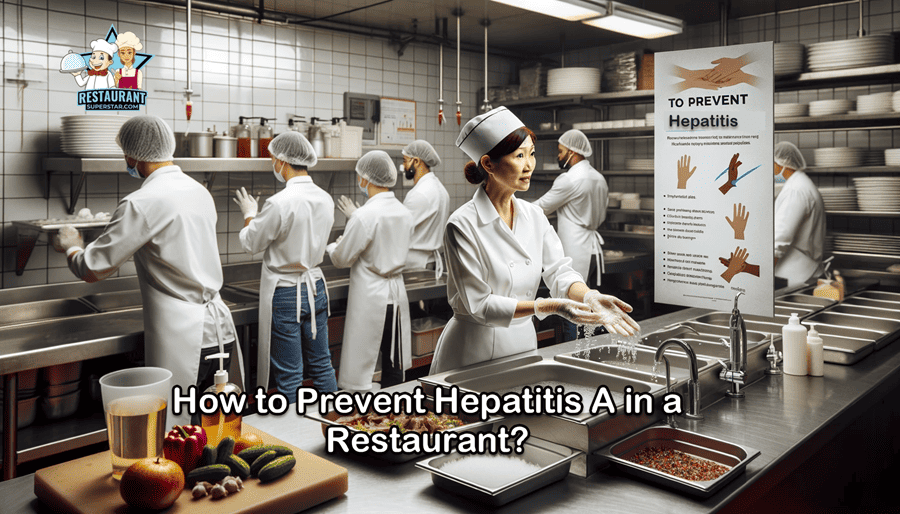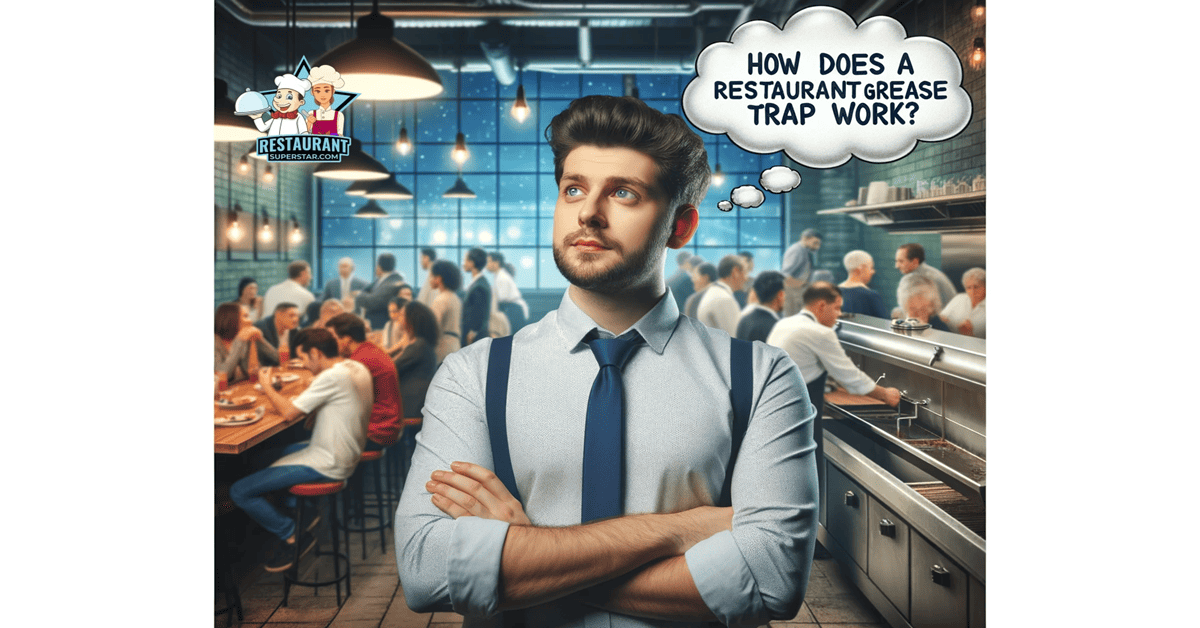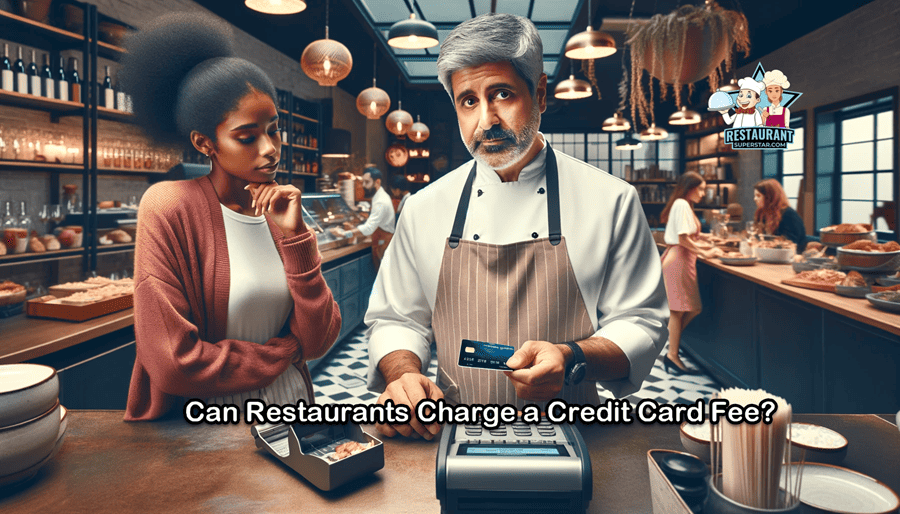Why Can’t Restaurants Donate Leftover Food?
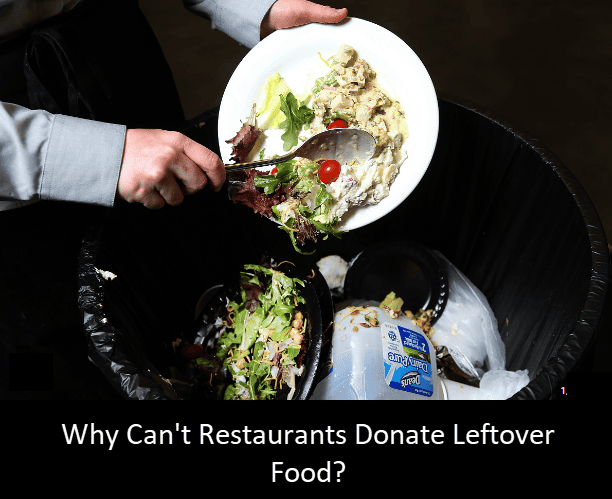
You are in the right place if you’re wondering, “Why can’t restaurants donate leftover food?”. As someone who has spent significant time working with various restaurants in sunny Florida, I have often pondered this question.
I am Jeff, a restaurant consultant living in Florida’s vibrant and diverse landscape, where the restaurant business is as bustling as ever.
Over the years, I’ve engaged with several restaurant owners grappling with the issue of food wastage in their establishments.
Based on my personal experiences, let me share some insights about the nuances of donating leftover food, which often seems straightforward but is indeed laden with many challenges.
Why Can’t Restaurants Donate Leftover Food?
Why can’t restaurants donate leftover food? There are many reasons why restaurants may not donate their leftover food, such as lack of awareness, logistical challenges, food safety concerns, or legal liability issues. However, there are also many benefits of donating food, such as reducing waste, saving money, helping the environment, and feeding the hungry.
Let’s delve into these aspects more intimately, perhaps with a sprinkle of my anecdotes to provide a clear picture.
Reasons Why Restaurants May Not Donate Their Leftover Food
Lack of Awareness
During my consultations, I noticed that some restaurant owners are unaware of the pathways available to donate unused food in restaurants.
In my early days, I needed to be more mindful of the organizations that readily accept food donations or the legal shields that protect donors. Witnessing the Bill Emerson Good Samaritan Food Donation Act in the USA is heartening.
This act protects those who wish to donate food, acting in good faith, from legal repercussions, which needs more spotlight in our community to encourage charitable food donations.
Logistical Challenges
I remember working closely with a small restaurant in Tampa, facing severe logistical issues. Their intent was there, but the infrastructure needed to be improved.
Restaurants often need help with hurdles such as inadequate storage facilities, staffing constraints, and the complicated choreography required to deliver the food to donation sites.
It’s not a one-size-fits-all scenario; the requirements of recipient organizations might vary greatly, sometimes not aligning with what the restaurant can offer, making leftover food disposal a significant challenge.
Food Safety Concerns
Safety, undeniably, comes first. I have interacted with restaurant owners who harbor genuine concerns about the safety standards maintained when handling leftover food.
The lingering doubt regarding whether the food has adhered to the stipulated safety norms often holds them back.
The fear of inadvertently causing harm and tarnishing their reputation is a significant deterrent in the food donation process.
As someone who has been a part of the Florida restaurant community, maintaining the trust and safety of our patrons is paramount.
Legal Liability Issues
Despite the protection offered by the Good Samaritan Act, legal concerns still haunt restaurant owners.
There is a palpable fear of legal ramifications if something goes awry during the donation process. The trust deficit with recipient organizations and the unfamiliarity with local food donation laws often act as a significant roadblock.
The perceived risks sometimes overshadow the noble intention behind food donations.
Yet, it’s not all doom and gloom. As a community, we are evolving, learning, and adapting. Initiatives and resources are sprouting up to facilitate more straightforward food donations.
The proposed Food Donation Improvement Act aims to broaden the liability protection scope and usher in tax incentives for food donations, which could revolutionize the food donation landscape.
Moreover, organizations like the Food Recovery Network are stepping up, forming alliances with students and dining services to channel surplus food to agencies fighting hunger.
Their educational initiatives have been enlightening, shedding light on pressing food waste and hunger issues.
Remember the efforts of the Food Waste Reduction Alliance. This consortium is fervently working to minimize food wastage and augment the quantum of nutritious food donations.
Their endeavor to steer food waste away from landfills and offer tools to businesses to better manage their food waste is commendable.
Understanding the Magnitude of Food Wastage in Restaurants.
If you have been following my journey, you know how passionate I am about sustainable food practices in restaurants. Today, I find it pressing to discuss a glaring issue that often keeps me up at night – the sheer magnitude of food wastage in restaurants.
It’s a topic that intertwines with that burning question we discussed before: “Why can’t restaurants donate leftover food?”.
Through my extensive journey across the nooks and crannies of Florida, consulting for various restaurants, I’ve faced the daunting reality of food wastage.
This issue weighs heavily on both the environment and the conscience. Here, let me break it down for you with some firsthand observations and experiences:
The Alarming Statistics
You wouldn’t believe the food wasted daily in restaurants. While consulting for a restaurant in Orlando a few months back, I came across startling statistics indicating that nearly a third of the food prepared is waste.
I saw this firsthand, and it was a wake-up call, a vivid testament to the excess food inventory piled up, beckoning us to take immediate action.
The Unused Food Saga
I’ve wandered into kitchens where I saw substantial amounts of unused food in restaurants, sound, wholesome meals that unfortunately find their way to the bin.
As a passionate lover of food and the culinary arts, it distresses me to see wastefulness prevail. It feels like a narrative that needs to change, transforming into a story of community food donations and sustainable food systems.
The Environmental Implications
My heart aches when I think of the repercussions this wastage has on our beautiful planet.
During one of my stints in Miami, I initiated a ‘zero waste initiative’ campaign, urging restaurant owners to reduce their footprint.
It is a commitment, an ongoing effort to preserve our environment. Food wastage isn’t just about the lost meals; it extends to squandered resources and increased greenhouse gas emissions, a burden our Earth carries silently.
I bet you’re pondering, “How can we be a part of the solution? How can we transform our establishments into sustainable havens, diligently managing food waste?” The journey begins with awareness, followed by actionable strategies.
The avenues are aplenty, whether embracing food recovery networks or initiating food waste reduction initiatives. It’s about taking that first determined step.
The Complexity of Food Safety Regulations.
Let’s unravel another vital thread intertwined with the issue of leftover food donations — the intricate maze of food safety regulations.
When navigating this realm, even seasoned restaurant owners often ask, “Why can’t restaurants donate leftover food without getting entangled in a web of rules and guidelines?”.
Detailed Information on Health and Safety Codes.
Imagine yourself in the bustling kitchen of a popular Tampa Bay eatery, where the tantalizing aroma of freshly prepared delicacies fills the air.
Every bite of food undergoes strict scrutiny, following codes prioritizing consumer well-being.
These codes cover a range of factors – from proper food storage temperatures to the cleanliness of utensils and the hygiene protocols for food handlers.
It may feel overwhelming initially, but trust me, adhering to these standards keeps your customers safe and opens doors for charitable food donations, free from liability worries.
The Role of Health Department Guidelines in Food Handling and Storage.
During my consulting days in Miami, I had thought-provoking conversations with restaurant owners about the health department guidelines. It’s interesting to understand why restaurants hesitate to donate leftover food, right?
These guidelines are crucial in guiding us on handling and storing food correctly. It’s all about making sure what reaches the consumers, or in our case, the recipients of food donations, is safe and nourishing.
So, I strongly recommend restaurant owners become familiar with these guidelines. It’ll make the whole process of donating food run smoother and hassle-free.
And you know what?
With knowledge comes empowerment – the kind that gives you the power to make informed decisions and foster a culture of community food donations, all while keeping safety standards in check.
Pretty awesome. Pretty impressive, huh?
Concerns about Perishable Food Items
Let’s talk about those perishable food items that always seem to be racing against time, leaving restaurant owners in a tough spot – should they dispose of them or donate them?
I’ve been in those kitchens, and I understand the hesitation.
No one wants to donate food that could be risky for someone’s health.
There’s a glimmer of hope. I’ve teamed up with food rescue programs that handle these perishable items with the utmost care, ensuring they’re fresh and wholesome when they reach those in need.
And you know what?
Establishing a systematic approach to identifying and sorting these perishable items can set the stage for successful food salvage operations.
Pretty cool, huh?
The Logistics of Leftover Food Disposal
This section will dive into the fascinating world of responsible and sustainable food disposal.
Trust me, after years of consulting experience, I’ve seen restaurant owners struggle with the question: “Why is it so hard to donate leftover food?” Don’t worry; we’ll tackle this puzzle and find solutions to encourage efficient food donation practices.
So, let’s break down the logistics step by step. And who knows, we can shed some light on the matter through my stories and insights.
An Explanation of Food Recovery Networks
During my time in Fort Lauderdale, I came across these fantastic things called food recovery networks. They’re like these super cool organizations that connect restaurants with extra food to community food banks and other places that help people in need.
It’s like a well-oiled machine, quietly doing its thing and ensuring that leftover food doesn’t go to waste. Instead, it finds a new home and helps those most need it.
I’ve been lucky enough to work closely with a few of these networks, helping them get rid of extra food by sending it where it’s most needed. It’s been a real eye-opener, showing me what we can accomplish working together.
And you know what? These networks use technology and the power of volunteers to make the whole process easier for restaurants. No more logistical nightmares – it’s a donation made simple!
Insights into Food Salvage Operations
Now, let’s focus on the heart of food salvage operations. Here, the goal is to rescue food approaching its expiration date, but it is still okay.
In my adventures across the Sunshine State, I’ve witnessed the meticulous process that goes into food salvage – a conscientious effort that involves sorting, storing, and redistributing food items to prevent unnecessary wastage.
Imagine a backstage pass to this grand operation, witnessing a harmonious blend of technology, human effort, and a common goal to reduce waste and feed the hungry.
It’s nothing short of a symphony, a dance of coordination and collaboration, where every small step significantly impacts.
Community Food Donations and Food Banks: How They Operate
As we meander further, I can’t help but share my experiences with community food donations and food banks, the silent heroes in this narrative.
These establishments operate with the sole purpose of channeling leftover food to feed people in need, turning potential waste into a source of nourishment.
In my interactions with these entities, I’ve seen the diligence and commitment that goes into ensuring the food is safe, nutritious and reaches the right people.
It’s a beacon of hope, fostering a community spirit that believes in sharing and caring. As restaurant owners, aligning with such organizations alleviates the burden of food disposal and contributes to a noble cause.
Liability Concerns Surrounding Food Donations
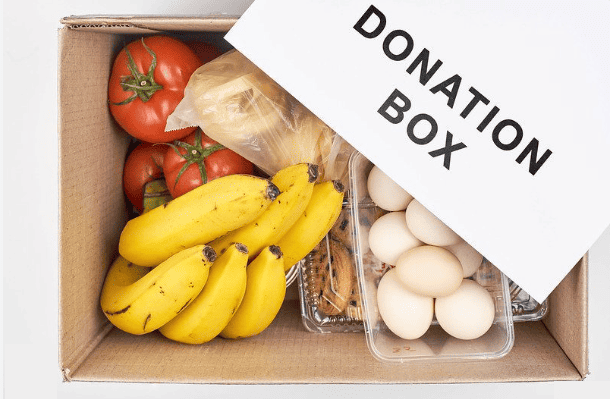
Grab a cup of Florida’s finest brew. Let’s chat about a topic that often keeps restaurant owners up at night – the worrisome liability concerns related to food donations.
Together, we’ll untangle the knots of these concerns and explore why restaurants can’t donate leftover food more freely.
Food Donation Liability and the Need for Liability Protection
In my many chats with restaurant owners across Florida, liability protection often pops up. In essence, this refers to the legal safeguards that protect businesses from facing the consequences if the donated food causes health issues.
You know what’s surprising?
Many owners must still be aware of the Bill Emerson Good Samaritan Food Donation Act.
This federal law has been around since 1996, and it protects donors. Yep, protection from civil and criminal liability in case the donated product causes harm to the recipient.
Pretty cool.
This act should ideally encourage more establishments to jump on the food donation bandwagon.
Let’s spread the love and help those in need. Spreading awareness about this act could transform our community’s food donation landscape.
Donation-Friendly Policies: What Are They and Why Are They Necessary?
As someone who’s seen the inner workings of this industry, donation-friendly policies are a game-changer.
These are strategies or protocols to facilitate smoother, more efficient food donation processes.
It encompasses setting up regular food pickups, fostering partnerships with local food banks, and educating staff about safe food handling and storage practices.
Implementing such policies can often be the difference between a successful food donation program and a failed one.
It fosters a culture of giving back to the community and positions your restaurant as a socially responsible entity. Trust me, in this age of conscious consumerism, it’s an attribute that holds immense value.
Real-world examples or Case Studies Regarding Food Donation Liabilities
In my journey, I’ve stumbled upon uplifting and cautionary tales regarding food donation liabilities.
One success story that stands out is that of a renowned restaurant chain in the region that streamlined its food donation program to contribute significantly to community food banks, creating waves of positive impact.
On the flip side, there have been instances where restaurants hesitated to donate owing to fears of legal repercussions.
However, it’s important to note that cases of liabilities are sporadic, thanks to the Good Samaritan Act, which I mentioned earlier.
Through continuous dialogue, education, and collaboration, we can rewrite these narratives, encouraging more establishments to step up and make food donations a regular part of their operations.
How Sustainable Food Practices Can Help
Today, let’s dive into a topic that’s not only close to my heart but is also shaping the future of the restaurant industry: sustainable food practices.
It may sound like a significant term, but we can break it down into small steps to make a real difference.
So, let’s delve into how adopting these practices can answer our recurring question: “Why can’t restaurants donate leftover food more effectively?”
An Exploration of Sustainable Food Systems
Embarking on my journey through the restaurant lanes of Florida, I’ve encountered some revolutionary sustainable food systems.
These comprehensive approaches examine food production and consumption as a cycle where nothing goes to waste. It encompasses sourcing local produce, reducing energy usage, and managing food waste intelligently.
During my interactions, I’ve noticed a burgeoning interest among restaurant owners in evolving toward more sustainable food systems.
By embracing these systems, we can foster a food culture more in tune with the environment and community needs. It’s a change that not only impacts our plates but also resonates on a global scale.
Zero Waste Initiative and Reducing Foodprint
So, I was sitting at one of the liveliest corners of Miami, sipping on a freshly brewed cup of coffee. And let me tell you, I couldn’t help but be amazed by all the zero-waste initiatives in the restaurant scene. It’s something.
These initiatives are like beacons of hope, guiding establishments in creating strategies to eliminate waste from the kitchen to the dining table.
Witnessing restaurant owners coming together to reduce their foodprint is genuinely heartening.
Just imagine a world where every last bit is utilized efficiently, where we maximize what we have and foster responsible consumption and waste management.
It’s not just a dream but a reality that many are actively working towards, and it makes me incredibly proud to be a part of this movement.
How Restaurants Can Adopt Sustainable Food Practices
Speaking from a space of experience and interaction, adopting sustainable food practices isn’t arduous.
It begins with awareness, followed by small yet impactful steps. From incorporating food recycling to adopting food recovery networks and exploring community food donations, the avenues are vast and varied.
Moreover, through workshops, collaborations, and community engagements, restaurant owners can cultivate a landscape where sustainable practices are the norm, not the exception.
It’s a journey that promises financial benefits and fosters a community that eats and lives well.
Financial Aspects of Food Donation: The Role of Tax Incentives
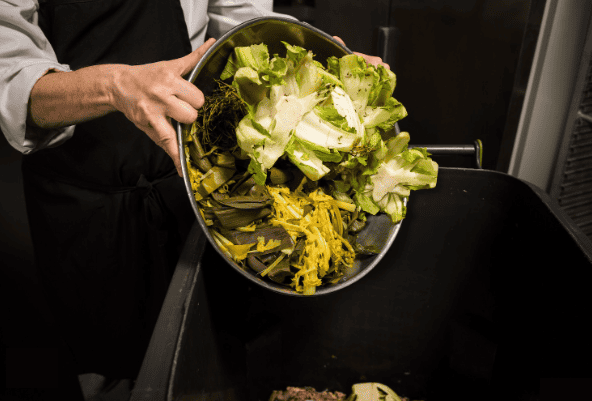
I’m delving into a captivating subject that deserves our attention and sparks our ongoing conversation: “Why is it challenging for restaurants to donate leftover food?” Join me as we navigate the depths and unravel this question’s mysteries.
I’m talking about the financial aspects surrounding the practice of food donation, explicitly focusing on tax incentives.
Grab your favorite brew and join me, Jeff, your restaurant consultant based in sunny Florida, as I dissect how the lure of tax incentives could tilt the balance towards receiving greater restaurant donations.
Overview of Food Donation Tax Incentives
As someone who has seen the ebb and flow of the restaurant business from up close, financial incentives are often strong motivators for businesses, big and small.
In the realm of food donations, tax incentives play a pivotal role. The government offers these benefits to encourage businesses to donate surplus food instead of letting it go to waste.
These incentives vary from state to state to give you an inside scoop. However, at a federal level, the IRS does provide certain tax breaks to businesses that donate food, allowing them to deduct the fair market value of the food donated from their taxable income.
This not only eases the financial burden but also adds a silver lining to the noble act of donating food.
How Tax Incentives Can Encourage Restaurant Leftover Food Donation
In numerous conversations with restaurant owners across Florida, I’ve seen a flicker of interest ignite when the topic of tax incentives is brought up.
From my observations, these incentives could be the nudge that restaurant owners need to jump onto the food donation bandwagon.
Imagine this – By aligning themselves with community food banks or food rescue programs, restaurants can carve a pathway where leftover food finds a new home instead of ending up in landfills.
And the cherry on top?
The financial cushion provided by these tax incentives.
By weaving these financial perks into their food management strategy, restaurant owners not only stand to benefit their business but also contribute to a more significant, more heartwarming cause – reducing food wastage and nourishing the community.
Conclusion
As we wrap up our gastronomic journey into the intricacies of food wastage in the restaurant business, it’s time for some reflection.
We started with a simple yet crucial question that holds so much importance today: “Why can’t restaurants donate leftover food?”
Throughout this discussion, we’ve ventured into logistics, food safety regulations, sustainable food practices, and even the enticing world of tax incentives.
The answer isn’t as straightforward as one might think. From a restaurateur’s perspective, factors like safety concerns, lack of awareness, logistical challenges, and even the fear of legal liabilities make donating leftover food a complex endeavor.
However, with every challenge comes an opportunity. Our restaurant community can overcome these barriers with the proper awareness, resources, and motivation.
We’ve seen how tax incentives can act as a financial motivator and how sustainable practices can benefit the environment and contribute positively to a restaurant’s operations and image.
Being deeply rooted in Florida’s vibrant food scene, I’ve witnessed firsthand the incredible power of community.
When restaurants, non-profits, and the public come together, magic happens. The act of donating food goes beyond just feeding the hungry.
It’s a statement that showcases our commitment to reducing waste, caring for our environment, and upholding the values of our community.
So, let’s shift the narrative.
Instead of pondering why we can’t, let’s focus on how we can. With collaboration, determination, and a dash of innovation, we can craft a future where leftover food finds a new purpose, enriching lives and nourishing souls.
Jeff Smith is a Restaurant Consultant with over 20 years of hospitality experience ranging from server to owner and general manager. He focuses on Restaurant POS technology as well as restaurant marketing. Check out our world-famous restaurant resources page for a comprehensive offering of hand-picked resources and tools to help your business. You can also check out some of our other restaurant business articles.

